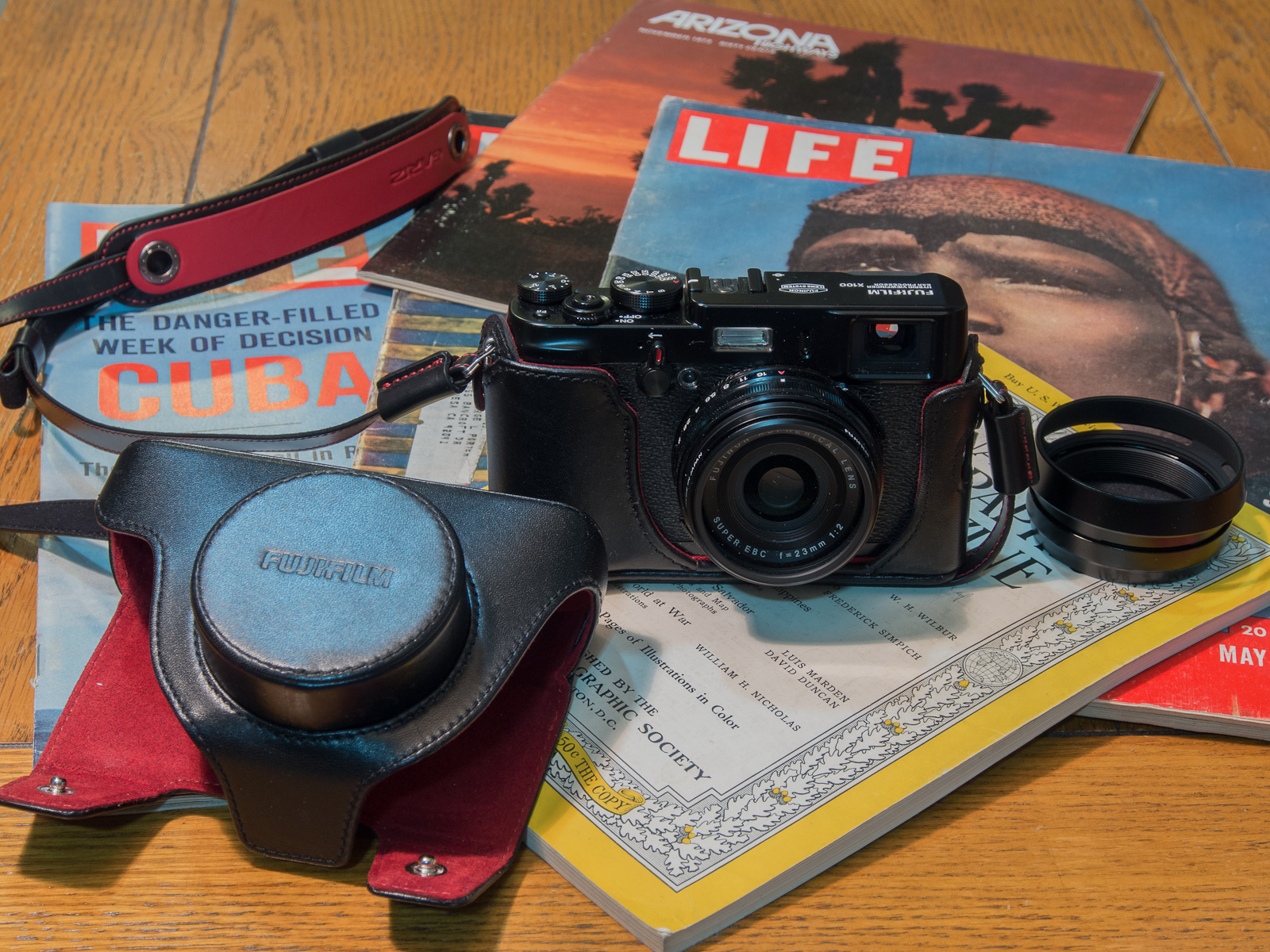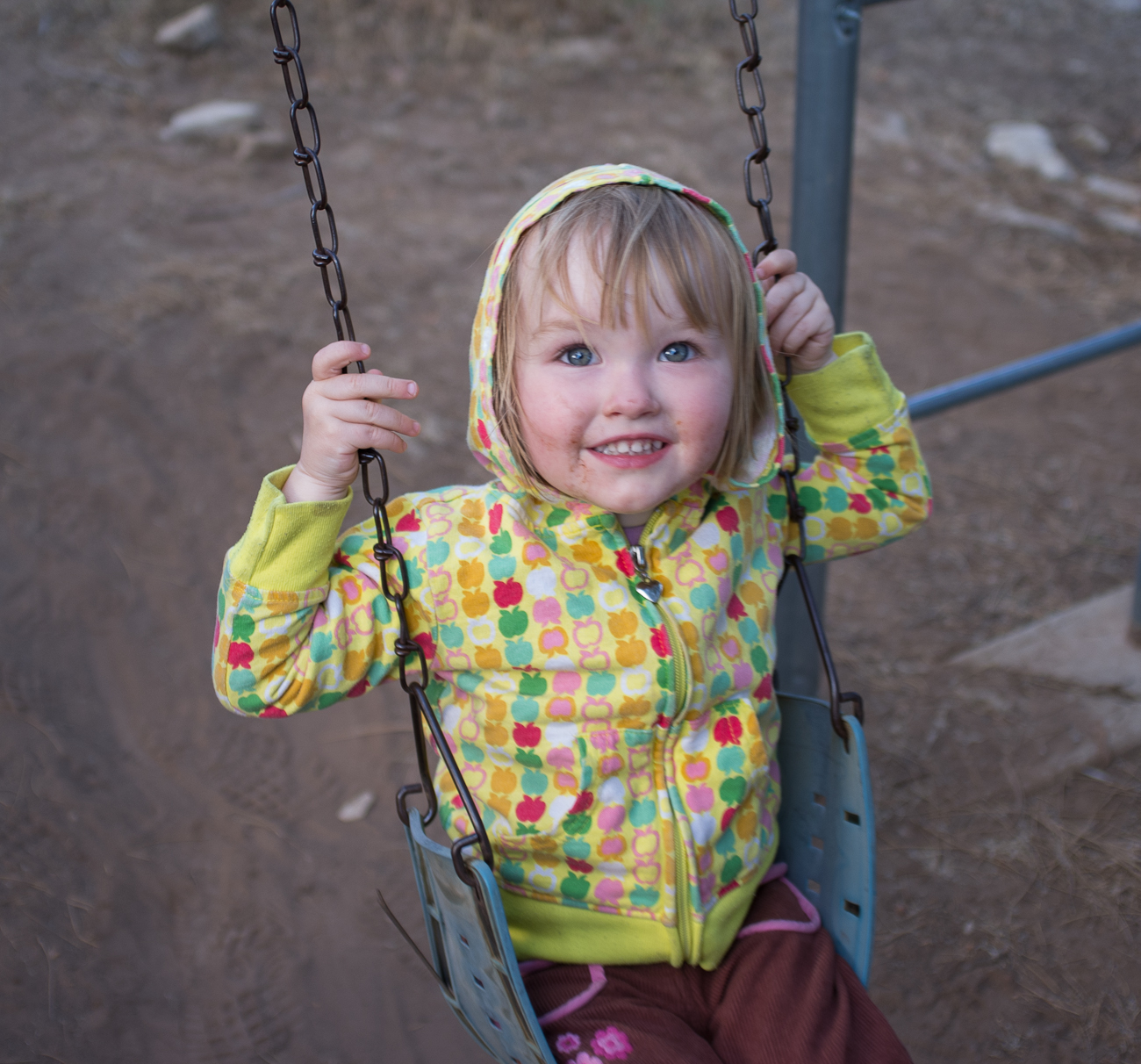
The Fuji X100 is a camera that has received more hype and publicity than just about any camera I am aware of. Its retro, rangefinder style and terrific image quality have made it a big hit among photo aficionados.
Why carry the X100 if I already have an OMD?
I own a couple of Olympus micro 4/3 cameras (E-P2 and OMD) and a wide assortment of interchangeable lenses for the micro 4/3 system, so why would I own an X100? I’ve been happy with my Olympus micro 4/3 cameras (especially the new OMD) so it might seem that the X100 is kind of redundant. However, I’ve found that I shoot with the X100 about half the time, even though the OMD is in most ways a superior camera. Why am I shooting with the X100 so often? Well, first, I will address a few things that are NOT reasons that I often choose the X100 over the OMD:
1: Image quality. The image quality of the X100 is superb, but it really isn’t noticeably better in real life use than my OMD. Both cameras provide for excellent image quality.
2. High ISO image quality. I’ve read a number of opinions that state that the X100’s high ISO image quality is superior to that of the OMD. That may or may not be true, but I’ve found that the OMD’s ability to use fast, wide-aperture lenses, coupled with the OMD’s amazing in body image stabilization, offsets whatever sensor advantage the X100 may have with regards to high ISO/low light photography. In fact, the OMD mounted with the Voightlander 25mm f:0.95 lens is vastly superior to the X100 in low light conditions.
3. Size. Both the OMD (with a 20mm pancake lens) and the X100 are about the same size.
4. Viewfinder. The optical viewfinder on the X100 is great, but the electronic viewfinder on the OMD is also great. In real world use, they are pretty much equivalents.
So, why is it that I so often use the X100 instead of the OMD? In a word, “simplicity.” I like the simple controls on the X100. The aperture ring in combination with the shutter speed dial and the exposure compensation dials combine into an an intuitive, elegant, and efficient set of exposure controls. The optical viewfinder is plain and uncluttered. The single, 35mm (equivalent) focal length lens is a good all-around lens, and not having to think about changing lenses or zooming in or out is often a good thing, as I can just focus on the basics. For many years, I used pocket rangefinder cameras with fixed prime lenses, so I’m used to composing with a fixed length lens, and “zooming with my feet” by moving closer or further away when the composition requires it.

In short, the X100 has all of the essentials covered, with good exposure control and a good lens, and doesn’t clutter up my mind with extraneous stuff. Compared with an interchangeable lens system, it’s a simple tool, but often, that’s all I want, especially when I don’t have anything particular in mind, and I’m just wandering around taking pictures of things that catch my attention. The OMD, with its broad array of lenses and features, can be configured to address a specific photographic challenge better than the X100 (taking long-range photos of wildlife, for example.) If I know exactly what I intend to be shooting, or the primary purpose of my activity is taking pictures, my inclination is to take the OMD with a few lenses that are tailored for the anticipated task. However, If I just want to have a camera with me, to capture whatever I might encounter, the X100 usually gets the nod. Lately, I’ve been trying to carry a camera with me most of the time, even if I’m not out specifically to take photos. The X100 is my go to “carry camera” in these situations.

Quirks, tricks, likes, and dislikes for the X100:
Some of the things I really like about the X100 are: The optical viewfinder is great. It’s bright, clear, and provides me with just the information I need for shooting. The size of the X100 is just right. It’s big enough to make ergonomics and handling easy, but small enough that it doesn’t get in the way. It doesn’t really fit in a shirt pocket, but it’s easy to carry on it’s strap all day in comfort. It’s pretty close to silent when taking photos. I turned the artificial shutter noises off, and what’s left are some mostly inaudible soft clicks when operating the shutter. This is great for times when you want to keep a low profile. There have been times when I’ve been taking pictures with the camera held at waist level, and the shutter is so quiet, nobody really even noticed I was shooting. The design of the body, besides being very retro-elegant, is less intimidating to the average person than a DSLR or a mirror-less system camera like the OMD. The X100 doesn’t look like a “serious” professional camera, so it’s easier to keep shooting at times when pointing a DSLR with a big lens at your subject might be awkward.
Image quality with the X100 is exceptional, and I’ve found that I really like the way that the X100 renders colors, particularly when set to emulate Velvia simulation, which gives colorful images a bit more saturation and contrast. Skin tones seem to be rendered in an especially pleasing manner.

My biggest complaint with the X100 is the truly awful manual focus. Much has been written about how unusable the X100 manual focus is, and I hate to say it, but all the negative comments are mostly true. Manual focus on the X100 pretty much sucks. First off, the manual focus ring is not particularly easy to turn, as it’s not very wide, and the aperture ring gets in the way. Second, it takes too long to adjust the focus. Turning the ring is a slow process and it takes forever to move the focus point from near to far or far to near. Luckily, you can press the AEL button, which temporarily overrides manual focus and auto-focuses, allowing you to then use manual focus and twist the dial for fine focus adjustment. I’ve decided that the only useful application for the manual focus mechanism on the X100 is zone focusing. When in manual focus, the display gives you a decent read out of focus distance, along with a bar graph that shows depth of field. If you know that you are going to be shooting subjects that are a fixed distance from the camera, then you could pre-set the manual focus to this zone, and the camera would be pre-focused at that range. In actual practice, however, I never use manual focus. The auto focus is reasonably fast and accurate, and provides much better real world results than trying to dink around with the complicated and user-unfriendly manual focus mechanism. This is really too bad, as having a decent range-finder manual focus system on this camera would have been terrific.
Light metering on the X100 is pretty good, but doesn’t seem as “smart” as metering on my micro-4/3 bodies. The X100 metering software seems to be fooled more often by odd back lighting or other uneven light patterns than my other cameras. Metering on the X100 reminds me of the meter on my old Canon F1 film body in that it requires more careful monitoring and input from the shooter to adjust for odd lighting. I’ve found that the X100 tends towards under exposure as well. However, this typically isn’t too much of an issue, as the RAW files capture so much information that even a severely underexposed shot can be adjusted quite nicely in post processing simply by adding a bit more light to the shadowed areas.
The X100 Black Special Edition Package:
I bought this camera in the special edition black package. In addition to the all black color of the camera, the special edition package comes with a Fuji camera case, camera strap, filter and hood adapter, filter, and hood. When you factor in all the additional accessories, the price premium for the special edition doesn’t seem quite as high. I really like the Fuji case. It fits the camera very well, and doesn’t add much bulk at all. It’s easy to uncover the camera to shoot, and the front cover snaps on and off easily for those times when you want to just shoot with a half case and don’t need the protection of the cover. The case looks great and is made from black leather backed with soft red suede. It has a high quality feel about it that is a perfect match for the X100 camera. The Fuji strap was pretty nice and functional, but I ended up replacing it with a Gariz leather strap in black with red accents. It works well and adds a little bit of bling to the camera.
The big disappointment was the adapter that is used to attach filters and the lens hood. With the adapter and filter attached, the lens protruded enough that the Fuji case no longer fit well. My preferred method of carrying the camera is to use a filter and not use a lens cap, so not being able to use the lens case with the filter attached made me rather unhappy. Fortunately, I found a work around on one of the Fuji forums. Instead of the Fuji filter adapter, I just bought a 49mm Cokin Extension ring, and attached the Fuji filter to the extension ring instead of the Fuji adapter. This allowed me to still use the camera case with the filter attached to the camera. The metal lens hood seems well made, but I seldom use it. There’s a lot of internet chatter about the “serious” flare issues with the X100 lens. I haven’t really noticed much flare with this camera. I’ve had a few shots where flare was present, but I haven’t seen in much more than with other lenses I’ve used. Maybe I just don’t shoot into the sun as much as other people do.

Is the price premium for the black special edition worth it? No, not really. However, buying this camera was more of an emotional rather than a rational decision, and the aesthetics of the black camera helped me cross that emotional threshold and buy a camera I don’t really need, but really wanted anyway.
The Bottom Line:
The X100 would not be my choice for an only camera. The OMD with an assortment of lenses is a much more capable and flexible photographic tool than the X100. However, as a supplement to my OMD based system, I really love my X100. With its sleek, beautiful compact shape, its excellent image quality, and pleasing controls, the X100 makes a perfect “everyday” camera for everything from taking family pictures, to street photography, to shots of interesting architecture I see while walking around. If I’m serious enough about a photographic opportunity that I’m carrying a camera bag, then I will take the OMD and several lenses. However, for the frequent times when I want to go light and just take a single camera and no extra lenses, then the X100 is typically my first choice. I wouldn’t say that it’s the best tool for capturing photographs, but the simplicity of the X100 makes it an excellent tool for capturing life as I experience it.


